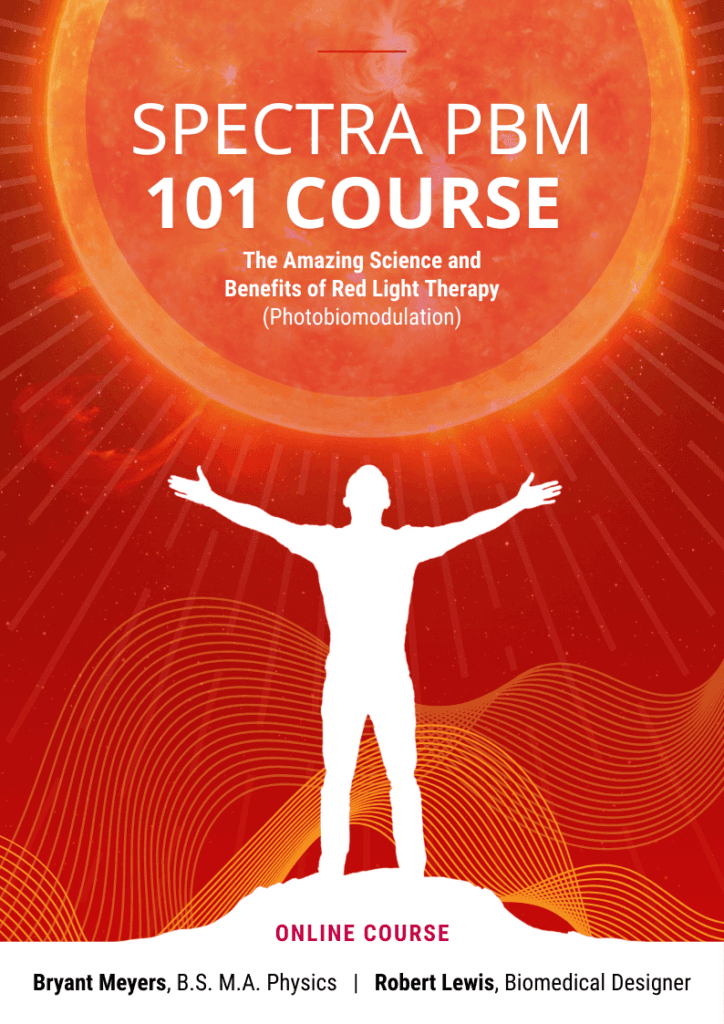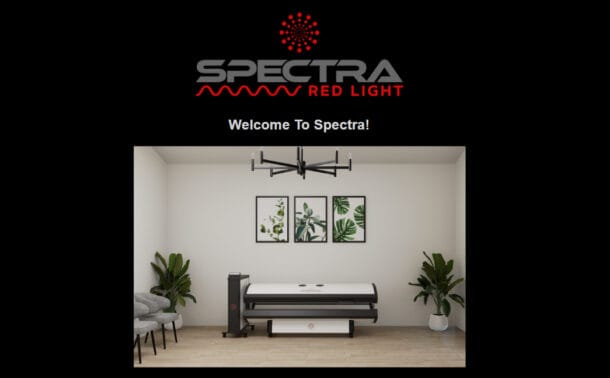Welcome to the world of Red Light Therapy, a wellness solution that’s been taking the health and beauty industry by storm. In this article, we’ll explain the scientific highlights of Red Light Therapy and explore why you should consider incorporating it into your daily routine.
In today’s world, it’s crucial to stay informed about innovative approaches to enhancing your well-being. Red Light Therapy, also known as photobiomodulation or low-level laser therapy (LLLT), is not just another fleeting trend; it’s a scientifically-backed therapy with a myriad of benefits that can positively impact your life.
As experts in Red Light Therapy, we’ll guide you through the biological, scientific, and technical aspects of this revolutionary therapy. We’ll unravel the physiological mechanisms of action that make Red Light Therapy an appealing choice for those seeking improvements in skin health, pain relief, muscle recovery, and more.
So, let’s embark on a journey to discover why Red Light Therapy beds are gaining recognition among individuals seeking natural, non-invasive, and evidence-based ways to enhance their health and well-being. Whether you’re looking to rejuvenate your skin, reduce pain, or enhance your overall vitality, Red Light Therapy may hold the key to unlocking your full potential.
Benefits of Red Light Therapy Beds
Red Light Therapy beds, powered by the scientifically grounded principle of photobiomodulation, offer a wide array of compelling benefits that can positively impact your well-being. Let’s explore these benefits, underpinned by the biological mechanisms of action, that make Red Light Therapy an appealing choice for those seeking natural and non-invasive therapies:
Skin Rejuvenation and Anti-Aging Effects
Red and near-infrared wavelengths stimulate collagen and elastin production, improving skin elasticity and reducing the appearance of fine lines and wrinkles.
Red Light Therapy beds are renowned for their ability to rejuvenate and enhance the health of your skin. By promoting the synthesis of collagen and elastin, these therapies enhance skin elasticity and contribute to a more youthful complexion. The increased cellular turnover also aids in reducing the appearance of fine lines and wrinkles, providing a non-surgical anti-aging solution.
Pain Relief and Inflammation Reduction
Photobiomodulation mitigates inflammation by reducing pro-inflammatory cytokines and increasing the production of anti-inflammatory mediators.
Whether you’re dealing with chronic pain or post-workout muscle soreness, Red Light Therapy beds can be a source of relief. By targeting inflamed tissues and regulating inflammatory responses at the cellular level, Red Light Therapy helps alleviate pain and reduce swelling. This makes it a valuable option for those seeking drug-free pain management.
Muscle Recovery and Athletic Performance Enhancement
Enhanced ATP production through photobiomodulation supports faster muscle recovery, improved endurance, and increased performance.
Athletes and fitness enthusiasts can benefit from the accelerated muscle recovery and enhanced performance offered by Red Light Therapy beds. By optimizing ATP production, these therapies aid in reducing muscle fatigue and post-exercise soreness. This, in turn, translates to improved athletic performance and a shorter downtime between workouts.
Enhanced Wound Healing and Tissue Repair
Photobiomodulation accelerates tissue repair by stimulating fibroblasts, collagen synthesis, and angiogenesis.
For individuals recovering from injuries or surgical procedures, Red Light Therapy beds can play a crucial role in expediting the healing process. By promoting the proliferation of fibroblasts and facilitating the synthesis of collagen, these therapies aid in tissue repair. Additionally, they support the growth of new blood vessels (angiogenesis), ensuring a good healing environment.
Mood Enhancement and Stress Reduction
Red Light Therapy stimulates the release of endorphins, which are natural mood-enhancing hormones.
Beyond physical benefits, Red Light Therapy beds can positively impact mental well-being. The release of endorphins, triggered by the therapy, can lead to improved mood and reduced stress levels. Many users report a sense of relaxation and well-being after Red Light Therapy sessions.
Cognitive Function and Sleep Improvement
Enhanced ATP production supports optimal brain function and may contribute to better sleep quality.
Red Light Therapy’s influence extends to cognitive health and sleep patterns. By aiding in the production of ATP, it supports optimal brain function, potentially enhancing cognitive clarity and focus. Some individuals experience improvements in sleep quality, making it a valuable addition to their bedtime routines.
Incorporating Red Light Therapy beds into your wellness regimen can offer a holistic approach to health and vitality. These benefits, underpinned by the biological and scientific mechanisms of action, demonstrate the potential of Red Light Therapy to enhance various aspects of your well-being. Whether you’re seeking physical recovery, skin rejuvenation, or an overall boost in vitality, Red Light Therapy beds provide a versatile and natural therapeutic option.
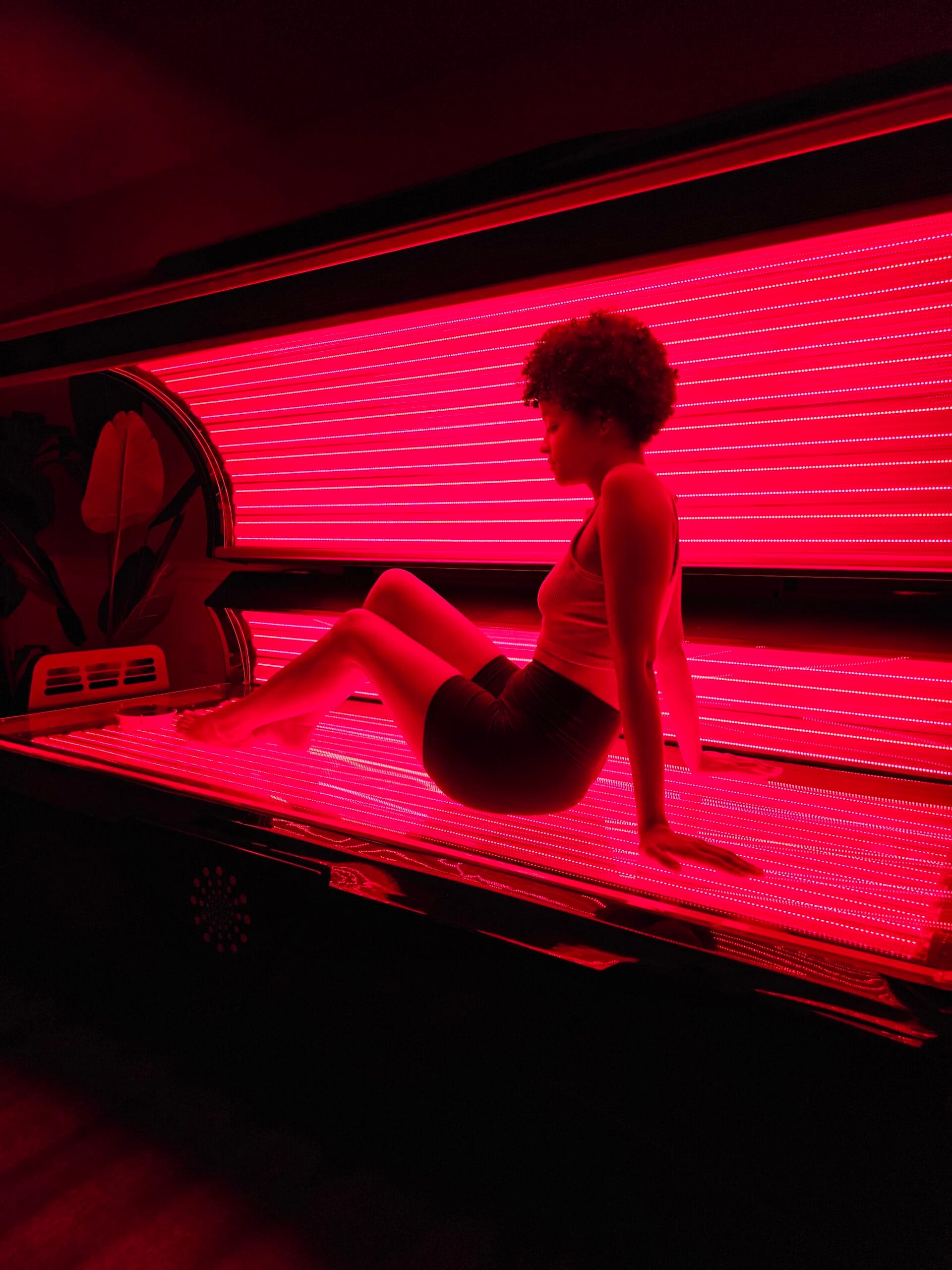
What is Red Light Therapy?
Red Light Therapy, often abbreviated as RLT, is a non-invasive and innovative form of therapy that utilizes specific wavelengths of red and near-infrared light to stimulate various physiological responses within the body. These therapeutic benefits are harnessed through the use of specialized Red Light Therapy beds, which have gained popularity due to their convenience and efficacy.
The Biological Basis of Red Light Therapy
To understand Red Light Therapy, it’s crucial to grasp the fundamental biological mechanism at play – photobiomodulation. Photobiomodulation refers to the process by which cells in the body absorb photons of light, primarily in the red and near-infrared spectrum, leading to a cascade of cellular events.
At the core of this mechanism lies the powerhouse of our cells—the mitochondria. These tiny organelles are responsible for producing adenosine triphosphate (ATP), the primary source of cellular energy. When exposed to specific wavelengths of red and near-infrared light, mitochondria become more efficient in producing ATP. This increased energy production has far-reaching effects throughout the body.
Red and Near-Infrared Light Wavelengths
Red Light Therapy utilizes two specific wavelength ranges:
Red Light (approximately 630-700 nanometers):
This range is associated with skin-deep penetration and is commonly used for its skin rejuvenation and anti-aging benefits. It has the ability to enhance collagen production, promote cellular turnover, and improve overall skin health.
Near-Infrared Light (approximately 700-1100 nanometers):
Near-infrared light penetrates deeper into the body, reaching muscles, tendons, and even bones. It plays a pivotal role in reducing inflammation, relieving pain, and accelerating the healing of tissues and injuries.
How Red Light Therapy Beds Work
Red Light Therapy beds are designed with an array of LED or low-level laser diodes that emit precisely calibrated red and near-infrared wavelengths. When you lay down on the bed, these therapeutic wavelengths are directed towards your body, where they are absorbed by the skin and underlying tissues.
As these photons of light are absorbed, they interact with the mitochondria in your cells, leading to an increase in ATP production. This boost in cellular energy has numerous positive effects, including:
- Enhanced cellular repair and regeneration
- Reduction of oxidative stress and inflammation
- Improved circulation and nutrient delivery
- Stimulation of collagen and elastin production
- Relief from pain and muscle soreness
Red Light Therapy beds offer a comfortable and efficient way to harness the benefits of photobiomodulation, making them an attractive option for individuals seeking natural and non-invasive therapies for various health and wellness goals. In the following sections, we’ll explore these benefits in more detail and how incorporating Red Light Therapy into your routine can lead to remarkable improvements in your overall well-being.
How Red Light Therapy Works
Understanding the inner workings of Red Light Therapy is essential to appreciate the full spectrum of its therapeutic potential. Red Light Therapy operates on a scientifically grounded principle known as photobiomodulation, which underpins the mechanism of action behind this remarkable therapy when utilized through specialized Red Light Therapy beds.
Photobiomodulation: A Biological Therapy
At the heart of Red Light Therapy’s efficacy lies the remarkable process of photobiomodulation. This biological phenomenon occurs when cells within the body absorb photons of light, predominantly within the red (approximately 630-700 nanometers) and near-infrared (approximately 700-1100 nanometers) spectrum. This absorption triggers a cascade of cellular events, driven by a fundamental cellular powerhouse – the mitochondria.
Mitochondria, often referred to as the cellular power plants, are responsible for generating adenosine triphosphate (ATP), the primary energy currency of cells. Exposure to specific red and near-infrared wavelengths optimizes the function of mitochondria, resulting in enhanced ATP production. This surge in cellular energy manifests in a range of physiological benefits.
Red Light Therapy Bed Technology
Red Light Therapy beds are equipped with an array of meticulously calibrated LED or low-level laser diodes. When you recline on the bed’s surface, these diodes emit the precise red and near-infrared wavelengths, directing them towards your body.
Upon exposure to these therapeutic wavelengths, your skin and underlying tissues absorb the photons of light. The absorbed photons then interact with the mitochondria within your cells.
Scientific Evidence and Clinical Studies of Red Light Therapy
The effectiveness of Red Light Therapy beds is firmly supported by a substantial body of scientific evidence and clinical studies. These studies talk about the therapeutic potential of Red Light Therapy across a range of applications, validating its role in promoting health and well-being. Here are some key findings from notable research:
Scientific evidence supports Red Light Therapy as an effective method for skin rejuvenation and the treatment of acne vulgaris. A study titled “Photobiomodulation: The Clinical Applications of Low-Level Light Therapy” states: “A reasonable body of clinical trial evidence exists to support the role of low-energy red/near-infrared light as a safe and effective method of skin rejuvenation, treatment of acne vulgaris.”[1] This recognition highlights the therapy’s potential to enhance skin health and address dermatological concerns.
Red Light Therapy has also demonstrated promise in body contouring. The same study mentioned above notes that low-energy red/near-infrared light is effective in body contouring. This aspect is of interest to individuals seeking non-invasive methods for improving their body shape and overall appearance.
Research has indicated that Red Light Therapy can effectively reduce inflammation in various parts of the body. According to a study titled “Mechanisms and applications of the anti-inflammatory effects of photobiomodulation,” photobiomodulation (PBM), which includes Red Light Therapy, can reduce inflammation in the brain, abdominal fat, wounds, lungs, and the spinal cord.[2] This anti-inflammatory property highlights the therapy’s potential in addressing a wide range of health issues associated with inflammation.
In addition to its physical benefits, Red Light Therapy has shown promise in enhancing cognitive function. A study titled “Photobiomodulation for the aging brain” highlights that studies in humans have demonstrated that PBM, including Red Light Therapy, can improve electrophysiological activity and cognitive functions such as attention, learning, memory, and mood in older individuals. [3] This suggests that Red Light Therapy may play a role in supporting cognitive health, especially in aging populations.
These findings from scientific studies talk about the credibility of Red Light Therapy as a versatile and effective therapeutic modality. With documented benefits ranging from skin rejuvenation and inflammation reduction to cognitive enhancement, Red Light Therapy beds offer a compelling option for individuals seeking evidence-based methods to improve their health and well-being.
How to Choose the Right Red Light Therapy Bed
Selecting the appropriate Red Light Therapy bed is crucial to ensure you receive the maximum benefits from this scientifically-backed therapy. To make an informed decision, consider the following factors:
Wavelength Range of Red Light Therapy Devices
Understanding the specific wavelengths emitted by the Red Light Therapy bed is essential. Different wavelength ranges have varying depths of penetration and physiological effects. Ensure the bed provides both red light (approximately 630-700 nanometers) and near-infrared light (approximately 700-1100 nanometers) to address a wide range of health and wellness goals. Visit our Wavelength Benefits Guide for information on specific conditions.
Power and Irradiance of Red Light Therapy Beds
The power and irradiance of the therapy bed’s LEDs or low-level laser diodes can significantly impact its effectiveness. Look for a bed that offers adequate irradiance to deliver therapeutic doses of light. This ensures that your cells receive the necessary energy to activate photobiomodulation.
FDA Clearance and Safety Certifications
Select Red Light Therapy beds that have received clearance from the U.S. Food and Drug Administration (FDA) or other relevant regulatory bodies. This certification indicates that the bed meets safety and efficacy standards, providing peace of mind regarding the therapy’s safety and effectiveness.
Session Duration and Frequency
To optimize the physiological mechanisms of action, it’s essential to adhere to recommended session durations and frequencies. Ensure that the bed’s guidelines align with scientific recommendations to achieve the desired results safely and efficiently. Try our Red Light Bed Dose Calculator for a more accurate result.
Cost and Budget of A Red Light Therapy Bed
Red Light Therapy beds vary in cost, and it’s important to choose one that aligns with your budget. While it’s tempting to seek the most affordable option, prioritize beds that meet the criteria for wavelengths, power, and safety to ensure you receive effective therapy. Use our Red Light Bed Cashflow & ROI Calculator for efficient estimation.
Warranty and Customer Support
Investigate the warranty and customer support provided by the manufacturer. This ensures that you have access to assistance in case of technical issues and can rely on the bed’s longevity.
Selecting the right Red Light Therapy bed is a crucial step in harnessing the therapy’s physiological mechanisms of action for your health and well-being. Consider factors such as wavelength range, power, safety certifications, session guidelines, eye protection, budget, warranty, and expert advice to make an informed decision. By choosing wisely, you can embark on a journey to improve your vitality and overall health through Red Light Therapy.
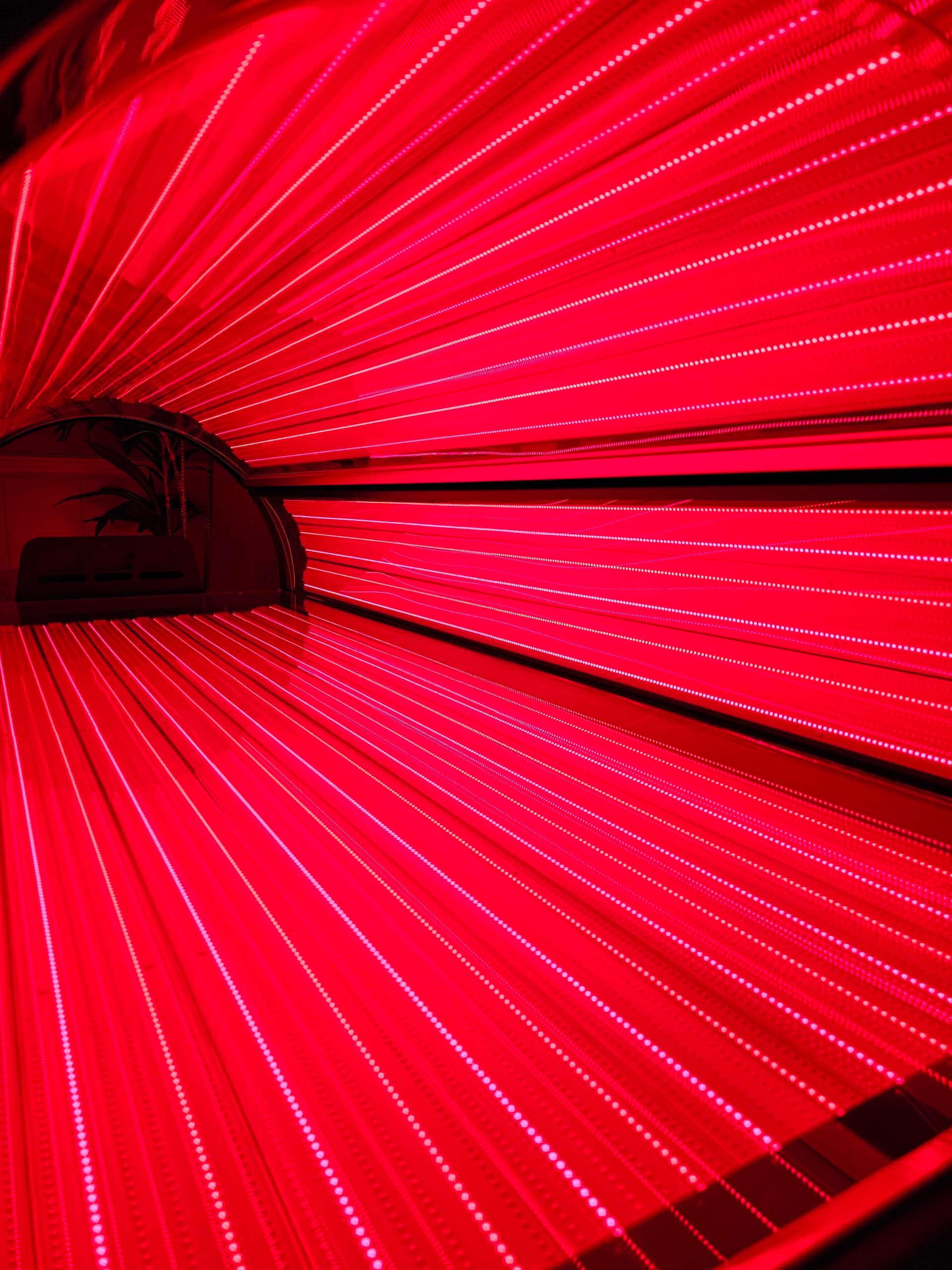
In the journey to enhance your health and well-being, Red Light Therapy stands as an option of scientific innovation and potential. This evidence-based therapy, rooted in the principles of photobiomodulation, offers a wealth of benefits underpinned by intricate biological, scientific, and technical mechanisms of action.
From the stimulation of collagen and elastin production for skin rejuvenation to the reduction of inflammation in the brain and abdominal fat, Red Light Therapy has shown its remarkable versatility. Scientific studies have affirmed its role in improving cognitive functions, supporting pain management, and aiding in the recovery of tissues and injuries.
As you contemplate the integration of Red Light Therapy into your wellness routine, remember that this therapy is not a mere trend but a well-established approach to improving your vitality. Its efficacy has been recognized in the realms of skin health, pain relief, muscle recovery, and more. The therapy’s potential to optimize mitochondrial function, enhance ATP production, and trigger vital cellular processes cannot be underestimated.
To make the most of Red Light Therapy’s biological, scientific, and technical mechanisms of action, consult with a healthcare professional or a Red Light Therapy expert to create a personalized treatment plan tailored to your goals. Consistency and adherence to safety guidelines are paramount, ensuring that you harness the full benefits of this therapy.
As you embark on your journey to better health and well-being, consider complementing Red Light Therapy with other wellness practices and monitoring your progress diligently. Remember, your goals may develop, and your therapy plan can adapt accordingly.
Incorporating Red Light Therapy into your routine offers a holistic approach to enhancing your overall quality of life. With its scientifically validated benefits, this therapy empowers you to rejuvenate your skin, reduce pain, recover faster, and optimize your cognitive function. It’s time to unlock your potential and embrace the transformative power of Red Light Therapy. Your journey to improved vitality and well-being awaits.
References
[1] Glass GE. Photobiomodulation: The Clinical Applications of Low-Level Light Therapy. Aesthet Surg J. 2021 May 18;41(6):723-738. doi: 10.1093/asj/sjab025. Erratum in: Aesthet Surg J. 2022 Apr 12;42(5):566. PMID: 33471046.
[2] Hamblin MR. Mechanisms and applications of the anti-inflammatory effects of photobiomodulation. AIMS Biophys. 2017;4(3):337-361. doi: 10.3934/biophy.2017.3.337. Epub 2017 May 19. PMID: 28748217; PMCID: PMC5523874.
[3] Cardoso FDS, Gonzalez-Lima F, Gomes da Silva S. Photobiomodulation for the aging brain. Ageing Res Rev. 2021 Sep;70:101415. doi: 10.1016/j.arr.2021.101415. Epub 2021 Jul 26. PMID: 34325071.
